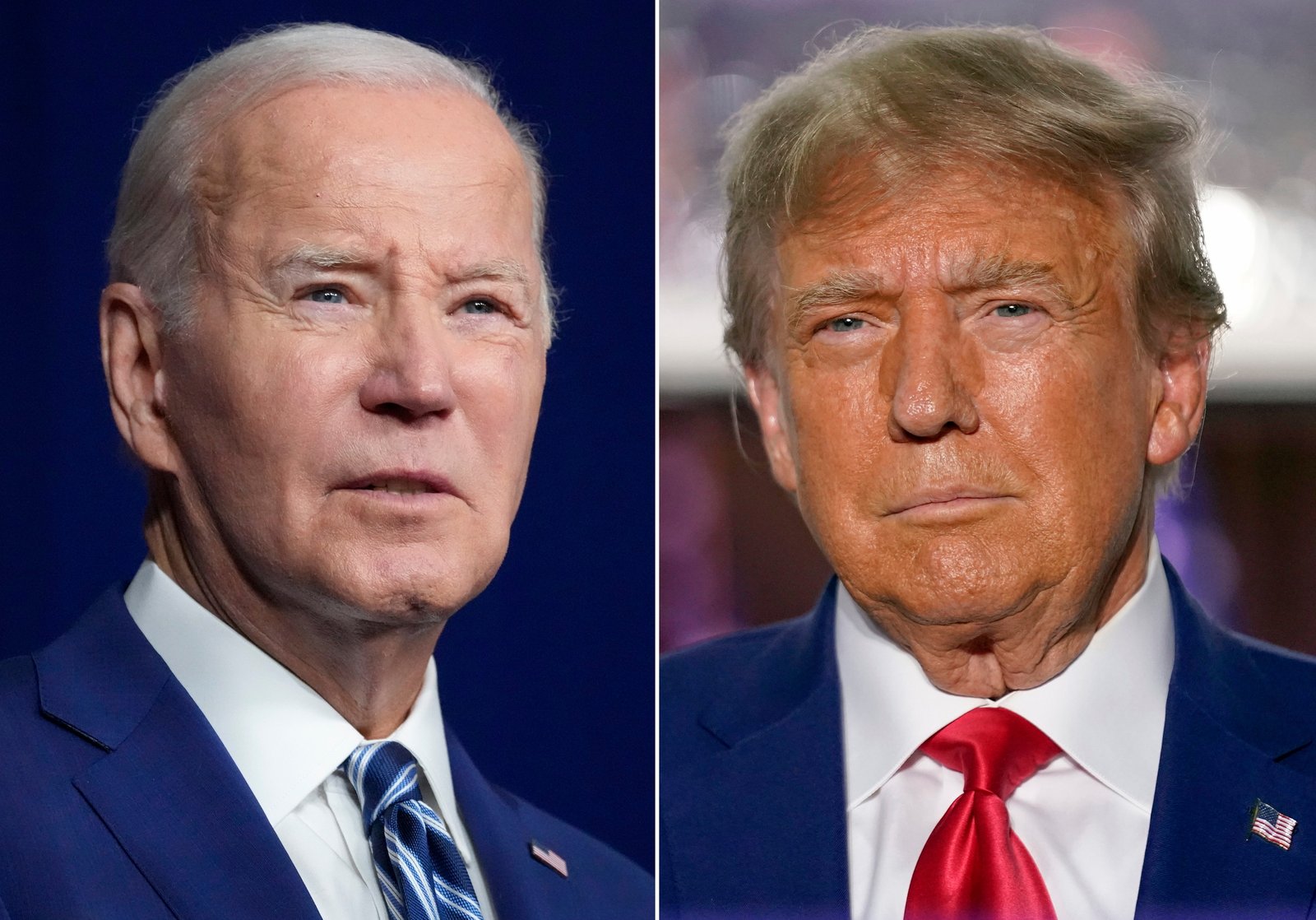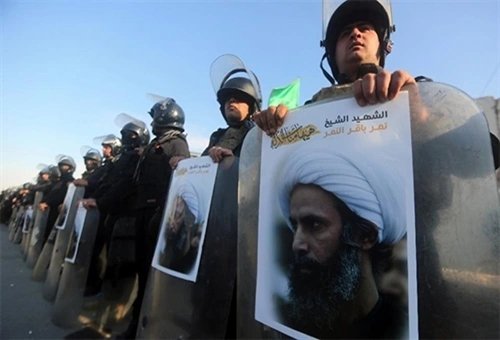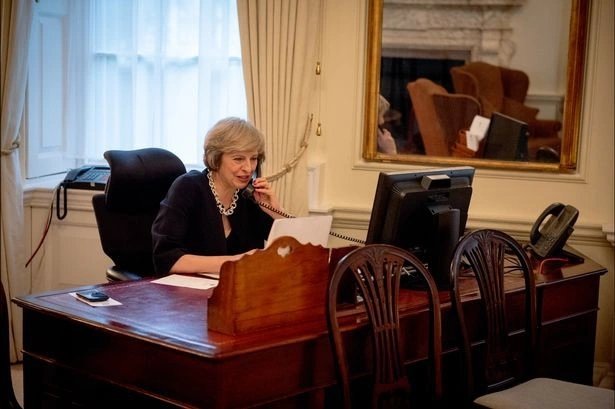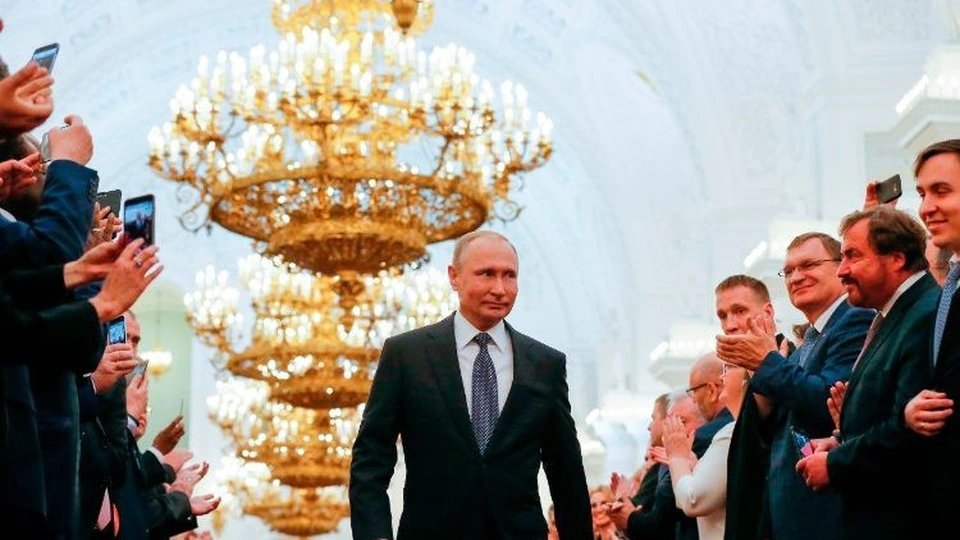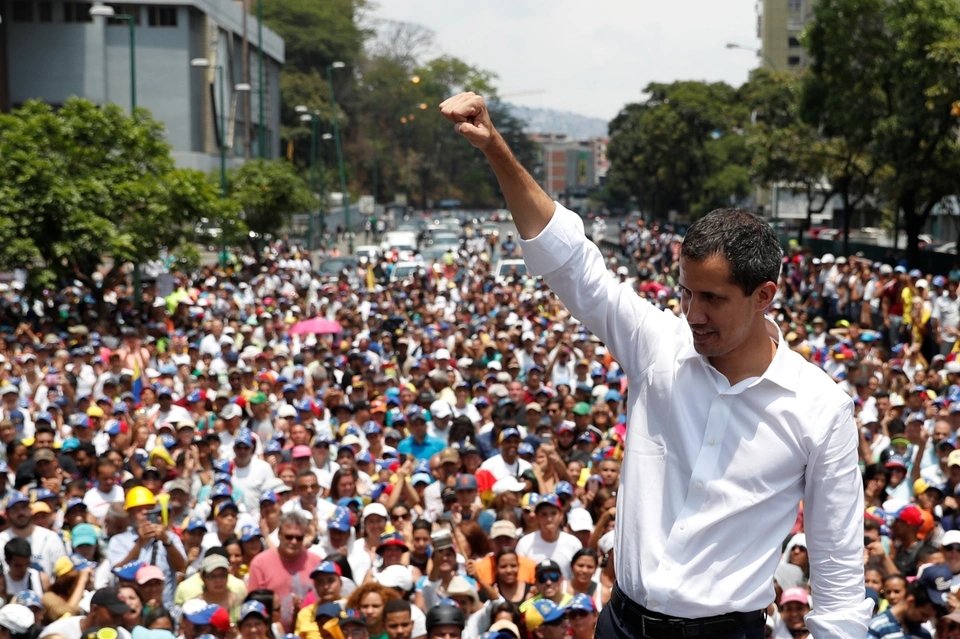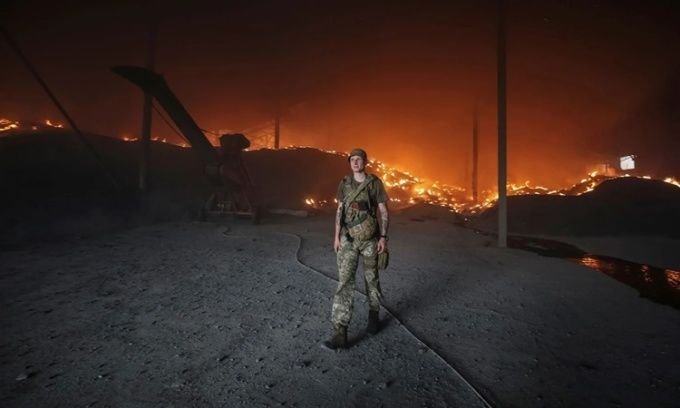
Fighting in Ukraine is taking place most intensely in Donbass, a large territory that has undergone many years of conflict and is now considered the battlefield that determines the future of Ukraine as well as Russia’s military campaign.
Donbass covers much of eastern Ukraine and has been at the forefront of the country’s conflict with pro-Russian separatists since 2014. But now, after eight years of simmering conflict, Donbass is experiencing even more fighting.
Ukrainian soldiers in front of a seed warehouse caught fire due to shelling in Donetsk, Donbass region, Ukraine, May 31.
Russian forces controlled much of the city of Severodonetsk and made progress elsewhere in the region.
After the Russian army failed in its attempt to control the capital Kiev and the central regions of Ukraine in the early stages of the campaign, Donbass now became Moscow’s most important strategic target.
If the campaign is successful in Donbass, Russia could make the West flinch, reduce Ukrainian forces’ fighting morale, and strengthen the power and influence of President Vladimir Putin.
Industrial heart
Chimneys, factories and coal fields are images that have dominated the landscape of Donbass for decades.

`The Soviet Union strongly developed Donbass, turning it into an industrial center,` said Markian Dobczansky, an expert at Harvard University’s Institute of Ukrainian Studies.
Increased steel and metal production, a railway running through the region and a growing shipping industry in the port city of Mariupol have diversified Donbass’ sources of profit, making it no longer dependent on
But in the three decades since the fall of the Soviet Union, Donbass’ economic power has declined.
According to him, Donbass is sometimes compared to America’s Rust Belt, where once-thriving industrial centers struggle to adapt.
Although the Donbass economy has been shaky, there is one characteristic of the region that has not changed over time.
Donbass’ long-standing industrial strength has attracted people from across Eastern Europe over the last century.
In Ukraine’s only post-Soviet census in 2001, more than half of Donbass’s population was ethnic Ukrainian, a third was ethnic Russian.
According to Dobczansky from Harvard University, Donbass’ cities are `far from urban centers and far from major cities` in central and western Ukraine.
The feeling of separation from the capital Kiev and other urban centers has given rise to a series of local movements and is the backdrop for pro-Russian separatists seeking to gain control of the Donbass region after Moscow’s annexation.
Symbolic meaning
A famous Soviet propaganda poster from 1921 called Donbass `the heart of Russia`, depicting the region as a beating heart with blood vessels reaching across the country.
Cities like Lugansk and Donetsk have historically been hailed as `places where Russians can see some version of themselves,` Finnin said.
Observers believe that President Putin wants to restore Russia’s glory as it was during the Soviet era.
`Donbass has a very important symbolic meaning. It provided raw materials for the entire Soviet Union,` Dobczansky said.
In that context, President Putin focused the second phase of his military campaign on Donbass.
`It is possible that President Putin will focus his efforts on dividing Ukraine in half, helping him declare a victory and appease domestic public opinion,` said Samir Puri, an expert on urban security and hybrid warfare at the Institute for the Study of Ukraine.
`Controlling Donbass will be a ‘consolation prize’ because Kiev is already out of the Russian military’s control, but this is a good consolation prize,` Puri said.
Increase pressure
Cars destroyed after shelling in Severodonetsk city, Lugansk province, Ukraine, in mid-March. Photo: AFP.
It is unclear whether the Donbass battlefield will be the final chapter in Russia’s military campaign, however, President Putin is clearly putting all his resources into the region.
The goal of `liberation` of the Donbass region was described by Russian Foreign Minister Sergei Lavrov as Moscow’s `absolute priority` in an interview with French television station TFI late last month.
In April, when announcing a shift in the focus of the military campaign to eastern Ukraine, Mr. Lavrov said that Russia had no choice but to carry out the operation because Ukrainian forces had stepped up attacks in the Donbass region,
`Donbass has been the front line for the past 8 years, so the military positions of both sides are very well reinforced,` Dobczansky assessed.
The conflict in Donbass over the past 8 years has caused a lot of damage, but there have been no major changes over the years.
However, Russia has made some progress in Donbass in the weeks since announcing the shift in focus of the campaign.
Ukrainian President Volodymyr Zelensky said the situation in the region is becoming increasingly difficult because Russia’s human resources have increased sharply in recent days.
`That’s why we must strengthen our defense, strengthen our resistance and Donbass will return to the Ukrainians,` Mr. Zelensky declared in a video last week.
The main direction of advance of Russian and Ukrainian forces in the Donbass region after more than 90 days of fighting.
The Ukrainian military said Russia’s current focus is to gain full control of the city of Severodonetsk, located close to the border between Donetsk and Lugansk provinces.
Meanwhile, Russia continues to continuously attack cities in northern Ukraine.
Meanwhile, several Ukrainian counterattacks have been successful.
President Zelensky has called on the West to provide more military aid to Ukraine and repeatedly warned about the level of destruction that Donbass has suffered since Russia redirected its military campaign.
Vu Hoang (According to CNN)

